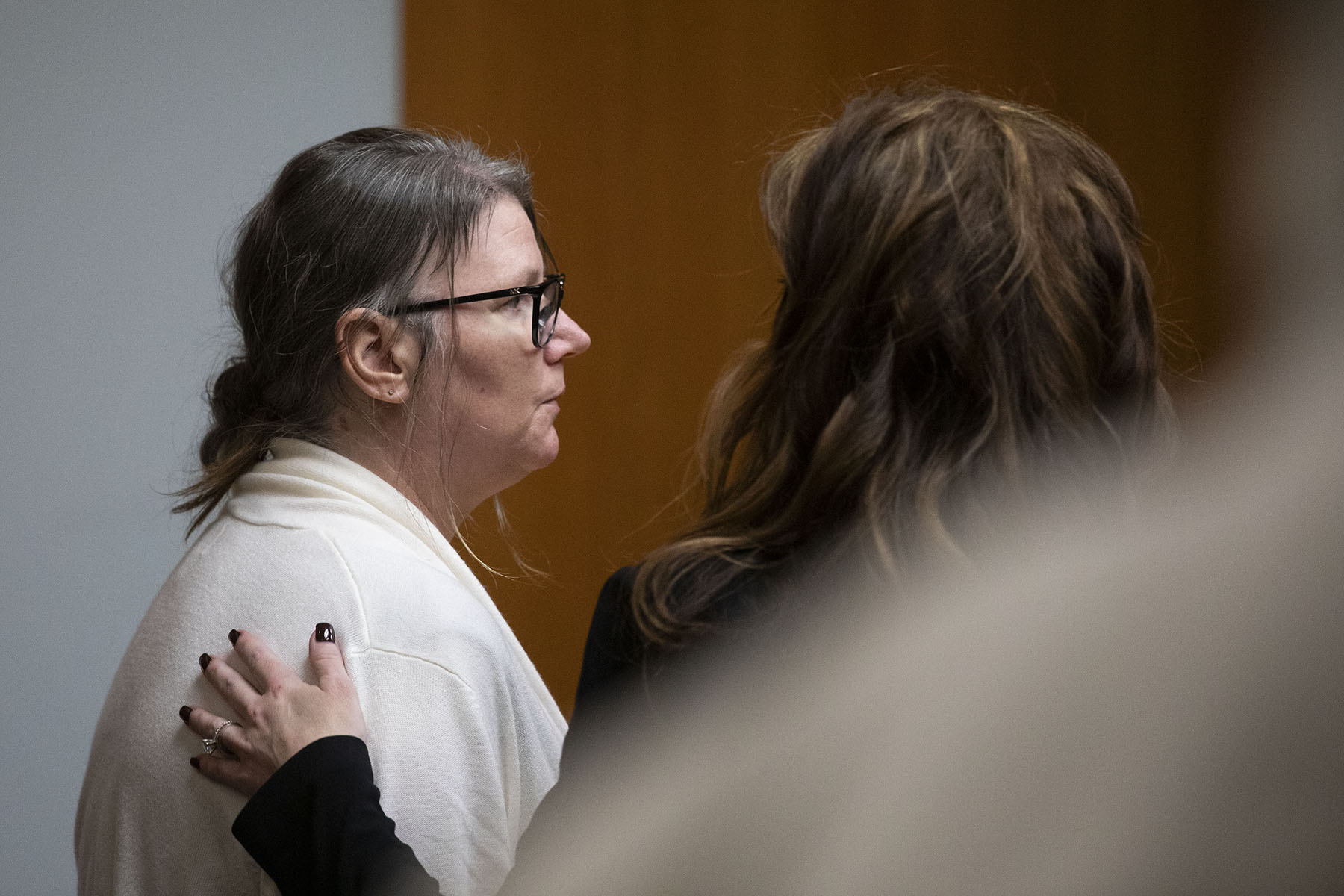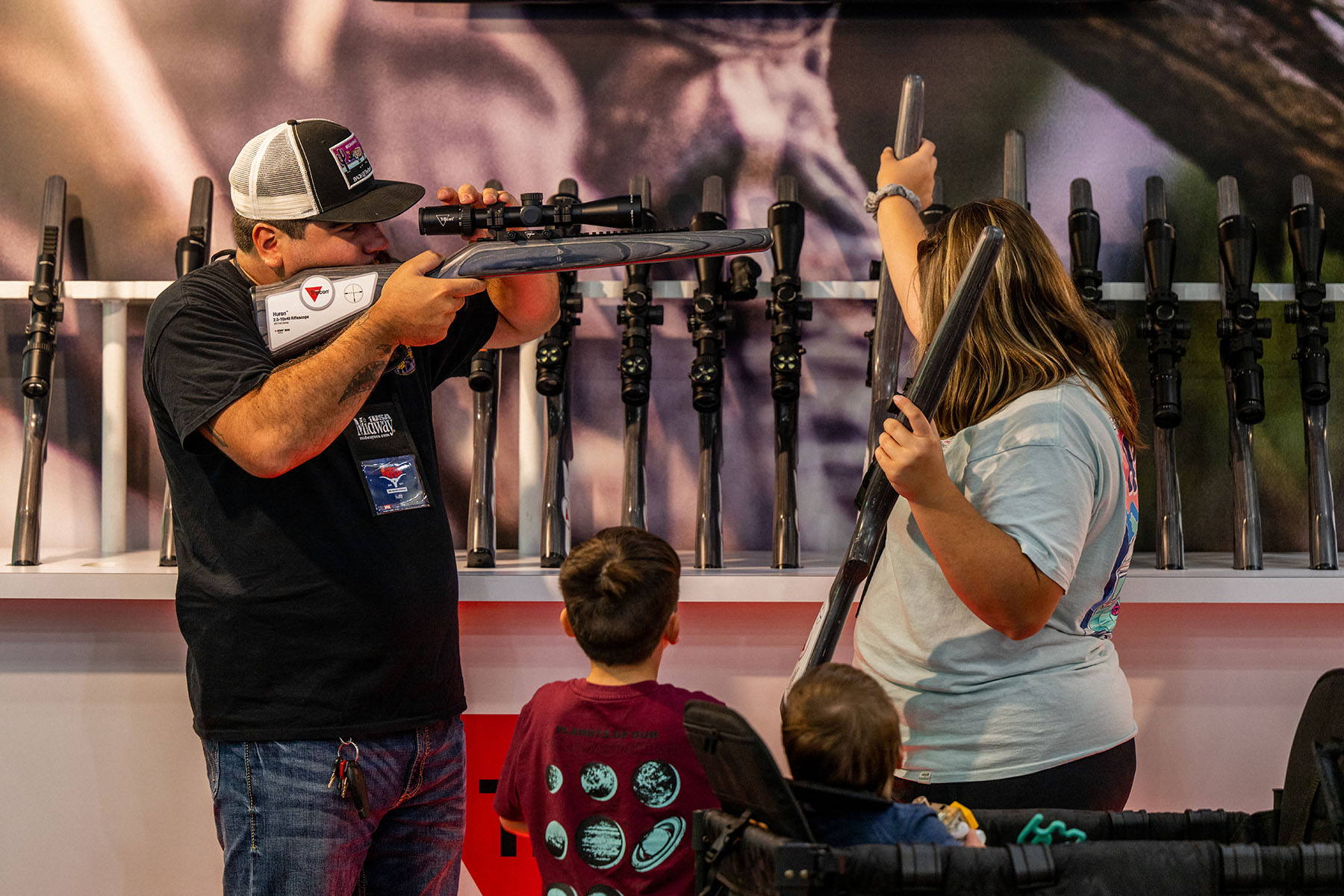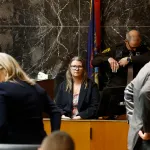A Michigan jury found Jennifer Crumbley guilty this week of four counts of involuntary manslaughter in connection with the 2021 mass shooting her son carried out at Oxford High School in suburban Detroit that left four students dead. The case largely focused on the ways in which Crumbley as a mother failed to respond to repeated warning signs that their son was dangerous. But another component of the case is that the semiautomatic handgun used in the shooting was purchased for the shooter by his parents, and then left unsecured in the home: The cable lock it came with was never used, the code for the gun safe the family purchased never changed from its 0-0-0 factory settings.
News of the verdict has called attention to a component of gun safety that advocates have long stressed, one that has garnered increased support from legislators nationwide, including from the White House: safe storage laws. The regulations — sometimes also called secure storage laws — create mandates for gun owners on how they store their weapons in order to prevent children and other unauthorized users from accessing them.
At the time of the Oxford shooting, Michigan had no safe storage law. Gov. Gretchen Whitmer signed a safe storage measure into law in April 2023; the new law takes effect on February 13. It requires all gun owners in the state who have children in their homes to store their firearms with either a cable lock or in a gun safe.
Approximately 4.6 million children live in homes with unsecured firearms in the United States; secure storage is widely regarded as a critical measure for reducing gun violence instances among this demographic — especially when it comes to self-inflicted harm, unintentional shootings and school shootings. A study published in the Journal of the American Medical Association (JAMA) found that households that lock up firearms and ammunition see at least 85 percent fewer unintentional injuries from guns experienced by children than those that don’t.
Gun violence is the leading cause of death of children in America.
-
Read Next:
A review done by the Department of Homeland Security’s National Threat Assessment Center found that 76 percent of all school shooters acquired their firearms from the home of a parent or close relative.
Eighty percent of firearms suicides by children involve a gun belonging to a family member, and the firearms suicide rate among children and teens has increased by almost 70 percent over the past decade.
The Centers for Disease Control and Prevention found that 76 percent of unintentional shootings were committed with unsecured guns from the home — most often from those stored in nightstands or other areas in a bedroom.
Right now, 26 states have safe storage or child-access protection laws, the latter being a less stringent version of secure storage that penalizes gun owners only if a child gains access to a firearm. In late January, the White House’s newly formed Office of Gun Violence Prevention and the Department of Education sent a letter asking school principals to communicate with their communities about the role safe storage plays in keeping schools safe. Concurrently, the Department of Justice released a guide to safe storage, including different types of storage devices and comprehensive guidance on best practices for firearms storage.

“Sadly, it sometimes takes a tragedy like what happened in the Oxford shooting to really highlight the fact that we all have a role to play in reducing gun violence — in particular that gun owners who are parents, especially, need to take efforts to protect their children, themselves, and their community by taking simple steps like securely storing a firearm,” said Nicholas Suplina, senior vice president for law and policy at Everytown for Gun Safety, a nonpartisan gun safety advocacy and policy research organization. “It’s just one of those things that a country that has 300 million guns needs to understand — that securely storing your firearm is probably the most important thing you can do to help reduce risks to your family and the community.”
Suplina said that as more and more attention has been drawn to the fact that guns are the leading cause of death in America, so has a public desire to see practical measures that can “reduce the tragedy of this statistic.” And safe storage conversations, he said, are nothing new — even safety manuals from the National Shooting Sports Foundation (NSSF), the trade association for the firearms industry, and from the National Rifle Association (NRA) all made mention of the need to lock up firearms and keep them out of the hands of unsupervised minors. In time, though, this conversation became increasingly politicized, despite the pressing reality that “if you’re going to own a gun, in particular if you live in a house with a child, you should be locking up that firearm unloaded and separate from ammunition, whether the law required you to or not.”
-
Read Next:
Suplina stressed that states with safe storage laws see more compliance with this best practice “because more people know about it, because at the point of sale you’re often told about the requirement, and something being a law does matter.”
Suplina said this is also why more and more states are passing these laws, as voters come to understand this correlation and ask for this accountability from lawmakers: “We’re just facing increasingly dramatic risks inside our homes and in our schools and communities when we fail to lock up our guns.”
This momentum towards finding government solutions when it comes to implementing safe storage practices goes beyond local statehouses, though, as evidenced by the White House’s high-profile commitment to publicizing safe storage measures.
“It’s very obvious that safe storage saves lives,” Gregory Jackson, deputy co-director in the Office of Gun Violence Prevention, told The 19th. “We are now at a point where we’re starting to realize that the guns that are getting into the hands of youth in crisis, they aren’t always coming from some unknown source. So many of these firearms are coming from homes and the very gun that is tucked under a pillow or a nightstand is the same gun that’s walking into schools and causing harm.”
It’s why talking about safe storage is a “huge priority” of the Biden-Harris administration, Jackson said.
And officials are aware that storage is just part of a bigger picture in preventing shootings. Jackson points to the over 10,000 new and existing school-based mental health counselors currently being trained through funding established by the Bipartisan Safer Communities Act — the largest investment in youth mental health in American history — as critical action needed to address the way that the youth mental health crisis in America and the gun violence epidemic routinely intersect. “We also know that access to the firearm is a huge, huge determinant of what that moment of crisis looks like.”
He said this is why the Department of Education specifically has become engaged as a partner in this work, helping educators access tools and resources to educate students and parents on safe storage. And educators, he said, have been enthusiastic about taking on this work, knowing that “they can help educate and work with parents and students to prevent tragedy before it happens.” This feeling is only underscored by the cultural pressure and mounting legislative initiatives put on teachers of late when it comes to serving as protective forces in the presence of school shootings, including the idea of arming teachers. “For too long we’ve seen the media and leaders and different voices demand that teachers be the ones protecting the youth, when in reality, their number one role is to educate. This is an opportunity to educate and teach people.”
But this work also extends beyond schools.
One key component of the Biden administration’s safe storage work is around affordability and accessibility, Jackson said. He explained that this has translated into partnering with cities and local community organizations to point them towards existing federal resources to help them purchase and distribute safe storage devices, to ensure that these tools reach diverse groups of people.
And when it comes to accountability, Jackson said so much of that work still exists around educating people on the risks associated with gun ownership. When a person purchases a gun, he said, “not only are you taking that risk of harm within your own home, but you’re taking that risk that someone in your home will take that gun and harm others.”
The Crumbley case – and the verdict – point at how the failure to store a weapon safely could set off further consequences for adults in the household.
“The Oxford shooting case will be a very clear message to parents who are gun owners across the country that they can be held accountable if they don’t act responsibly,” Suplina said. “But in addition — it is also a message to non-gun-owning parents that you know there’s a conversation to be had with those in your community today about whether they are securely storing their firearms.”








